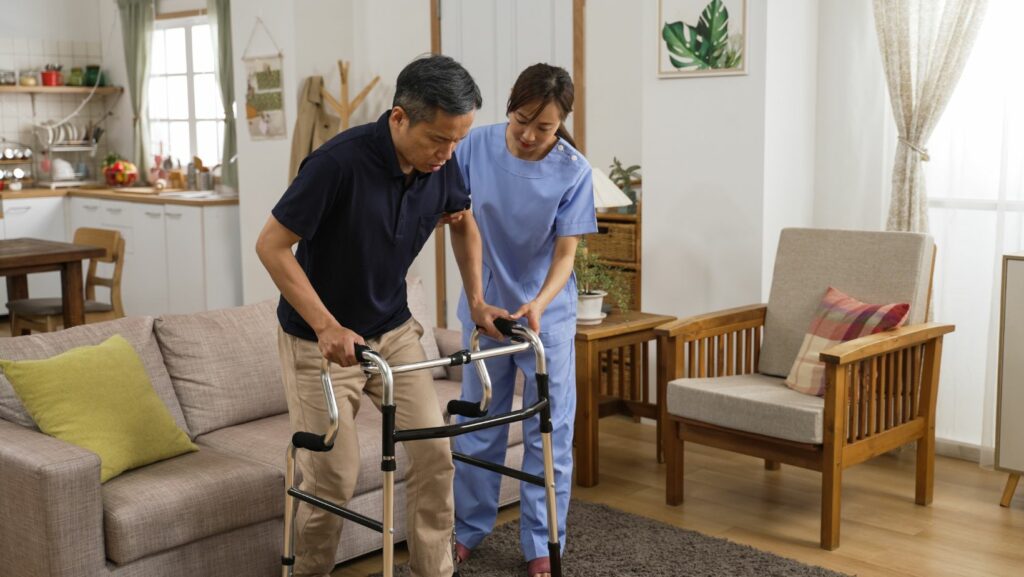
Exploring The Impact of HBOT on Stroke Patients’ Quality of Life
Researchers at Tel Aviv University have found that HBOT can reinvigorate dormant neurons in the brain after a stroke. High oxygen levels can help invigorate brain tissue deprived of oxygen, even years after a stroke.
HBOT can also prevent “reperfusion injury.” This severe damage occurs when the blood flow returns to oxygen-deprived areas.
Improved Cognition
A recent randomized prospective trial using a crossover design presented persuasive evidence that HBOT can revitalize chronically impaired brain function and significantly improve the quality of life of mTBI stroke patients at a late chronic stage, even years after the event.
The participants suffered a stroke 6-36 months before the trial and were randomly divided into a treated group and a control group. Both groups underwent detailed neurologic and quality-of-life evaluations, including SPECT imaging. Following two months (40 daily sessions at 1.5ATA), the therapy group receiving hbot for stroke patients showed significant improvements.
The improvement in cognitive function was the same for all domains regardless of stroke type, location, or hemisphere of injury. It was independent of the duration of symptoms, chronic medical conditions, and prescribed medications. Baseline cognitive performance was also a significant predictor of post-HBOT improvement.

Increased Physical Activity
A recent study showed that HBOT can revitalize chronically impaired brain function in stroke patients, even at the late-chronic stage of the disease. This is especially true for ischemic strokes when blood vessels that supply oxygen and nutrients to the brain are blocked by a blood clot or fatty deposits (plaque).
These improvements correlated with changes in SPECT scans of the participants, indicating that areas of the brain affected by hemorrhagic or ischemic stroke are re-activated following HBOT treatment. Furthermore, the cognitive domains that improved most significantly after HBOT were also those most affected by the corresponding SPECT scan.
Maintaining regular physical activity, even at a light level, can boost stroke survivors’ quality of life by reducing the risk of depression and heart disease. These findings may lead to new ways to target people whose physical activity decreases after a stroke and help them improve their quality of life. This is especially important for ischemic and hemorrhagic stroke survivors who have the most significant deficits.

Improved Sleep
Getting a good night’s sleep is essential for mental and physical health. A study analyzed the sleep quality of people with a stroke or traumatic brain injury (TBI) and found that HBOT improved their sleep. Specifically, the patients with HBOT showed better sleep in both the control and treatment periods than their counterparts without HBOT.
This demonstrates the importance of incorporating HBOT into a stroke patient’s recovery plan to improve their quality of life and increase their chances of recovery. HBOT stimulates neurogenesis, alleviates oxidative stress, promotes mitochondrial function in neurons and glial cells, and enhances the levels of endogenous neurotrophins.
In this clinical trial, HBOT sessions significantly improved all cognitive domains, with 86% of the patients demonstrating a clinically significant improvement (CSI). These improvements were seen even in the late chronic stage of post-stroke. In addition, it was found that the metabolic impairment exhibited by the imaging and the baseline cognitive scores were more significant predictors of CSI than stroke type, location, or dominance.
Reduced Depression
People who suffer a stroke may develop depression, which can impact their recovery and cause them to avoid socializing or stop taking the medication they need. Having reduced depression levels can help to improve their quality of life and increase their motivation to attend therapy sessions and follow their doctors’ advice.
HBOT provides the body with a natural source of oxygen by dissolving oxygen in plasma, a liquid component of blood that transports proteins, hormones, and nutrients. The pressurized environment of HBOT allows this extra oxygen to reach damaged tissues and cells that are starved of oxygen.
Animal studies show that the HBO environment leads to long-term neuronal, function, and cognition-enhancing effects in addition to improving blood flow, angiogenesis, cellular repair, reduction of oxidative stress, and elevation of Wnt-3 and nestin expression. Several pathways contribute to these effects, including inhibition of apoptosis, improvement of mitochondrial function, mobilization of bone marrow stem cells and angiogenesis, and activation of the vascular endothelial growth factor (VEGF)/extracellular signal-regulated kinase (ERK) pathway [45].”





